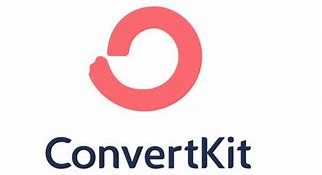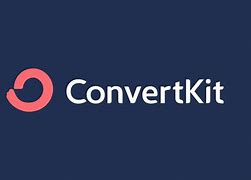Convertkit Review 2024: Top Features, Pricing & More
Building an email list for your business can be the key to long-term success and growth, but it’s easier said than done! Some people give up before they get started because of confusing and clunky signup forms and complicated or difficult-to-use email software that requires a steep learning curve.
With Convertkit, you don’t have to worry about that; it’s user-friendly so you can get started immediately! In this guide, we’ll walk you through how to start using Convertkit so you can finally grow your email list and increase your sales.
What Is ConvertKit?
ConvertKit was founded in 2013 by Nathan Barry, a blogger who was searching for a more creator-friendly email marketing solution.

Since then, the ConvertKit team has been dedicated to powering the email lists of more than 428,000 creative entrepreneurs and has grown to reach more than 253 million subscribers. On average, ConvertKit is more popular among bloggers and other content creators and not as much with eCommerce websites or brick-and-mortar stores.
Our Favorite Features in ConvertKit
In this ConvertKit review, I am discussing the main features of the service. However, here is a quick overview of their main features:
Email Builder – A simple email text editor for creating email broadcasts that look personal and professional.
Forms – Use ConvertKit’s form builder to start collecting new subscribers.
Segmentation – Organize subscribers with ConvertKit’s powerful segmentation and tagging features.
Automations – Build automation using a visual flowchart builder or prebuilt templates.
Landing Pages – Check out over 40 templates for promoting ebooks, events, product launches, and webinars.
A/B Testing – Run a subject line and landing page split test.
WordPress Plugin – Get ConvertKit forms embedded on your blog easily with this plugin for WordPress.
Integrations – ConvertKit boasts over 90 integrations.
Free Migration – ConvertKit\’s paid customers get a free migration.
Facebook Custom Audiences – add your Facebook pixel to your ConvertKit landing pages and create personalized ads with Creator Pro.
Link Redirects – Creator Pro can help you correct broken links in your email campaigns.
Two-Factor Authentication – Enable this feature to login securely to your ConvertKit account.
ConvertKit Pricing
ConvertKit’s pricing varies based on how many subscribers you have, if you choose the Creator or Creator Pro plan, and there’s also a free plan available for up to 1000 subscribers, so you can try ConvertKit without paying anything.
If your email list is over 1000 subscribers, you need to choose between Creator and Creator Pro.
For most bloggers, Creator has enough functionality. One perk of Creator Pro is integration with Facebook Custom Audiences to let you remarket with paid ads. Creator Pro also lets you create a newsletter rewards program that pays subscribers for referring new readers to your email list.
There are some other useful Creators Pro features, like being able to redirect links if you accidentally send out an email blast with an incorrect or broken link. However, if you’re a solo blogger and don’t need team members or Facebook Custom Audiences, skip paying for Creator Pro.
If you subscribe to annual billing, you get two months free. The Creator and Creator Pro editions offer a 14-day free trial and the ability to use the service without entering a credit card.
Basic vs. Pro Plan
ConvertKit’s Basic plan includes all of your standard email marketing tools, such as automation and segmentation. As you start building a larger list, however, you’ll need to upgrade to a Pro plan in order to get data tracking or advanced forms and automation.
You can always switch back down later if your needs change! In ConvertKit’s own words (from their pricing page): The Basic plan is great for many small businesses and teams that want an easy solution for managing subscribers.
ConvertKit’s Features
Not only is ConvertKit a great tool for email marketing, but it’s also great at automation and segmentation. The interface can be a little complex, so you’ll need some time to learn it (and watch video training tutorials), but once you do, your email campaigns will become more personalized and targeted than ever before.
Email Marketing Automation
Automating repetitive tasks is an important way to free up your time, which means you’ll make more progress on everything else, like marketing and driving revenue.
While ConvertKit doesn’t have as many automation features as Mailerlite, it more than makes up for it with its user-friendly visual flowchart builder.
For those not familiar with technical skills, my favorite aspect is the pre-built automation templates you can use.
In regards to automation logic, ConvertKit gives you the ability to create a sequence of triggers, actions, and conditions, so that you can choose when and how it runs.
Third-Party Integrations
ConvertKit offers over 90 integrations with popular partners like Zappier, ClickFunnels, Convertful, Flow.ly, Jetpack, Monday.com, OptinMonster, LeadPages, and Shopify to mention but a few.

Due to its Zapier integration and APIs, ConvertKit will have no difficulty in integrating with third-party software.
Email Deliverability
Though overlooked, the metric of email deliverability is the percentage of your messages that actually reach the inboxes of your subscribers. Consider it this way, if your emails keep getting marked as spam, what good is an email service provider?

According to ConvertKit, its email deliverability is comparable to that of its competitors, and emails open at a rate of 29.2%, which is quite high.
The thing I like about ConvertKit is that the emails seem more personal and less like an advertisement. In other words, templates are primarily text-based.
If the subscriber doesn’t like ConvertKit’s emails, they can opt-out of receiving them at any time.
Email Analytics and Reporting
Optimizing your email marketing strategy means gaining data about what worked and what didn’t, and ConvertKit offers basic analytics and reporting on its broadcast dashboard.
This dashboard offers details on how often you send emails, how successful your messages are, how many people are un-subscribing, and so on.
For example, one handy feature is the resend to unopened function, which allows you to send an email to somebody who hasn’t yet opened it the first time. Just be sure not to bombard them with spam by resending the same email over and over.
ConvertKit also provides tracking for email sequences, which might tell you something about why your email is more likely to be discarded.
My Final Thoughts
ConvertKit is specifically designed for bloggers, and it’s extremely intuitive as an email marketing platform.
If you want personal emails that use a degree of automation and have products or subscriptions to sell, ConvertKit is perfect for you. Even with a higher price tag, the pros of simplicity and having automation templates available to get you up and running quickly outweigh the disadvantages.
I tried a few different systems but was frustrated with their limitations and lack of flexibility.
When ConvertKit came onto my radar, it was everything I wanted from an email provider—and more!








